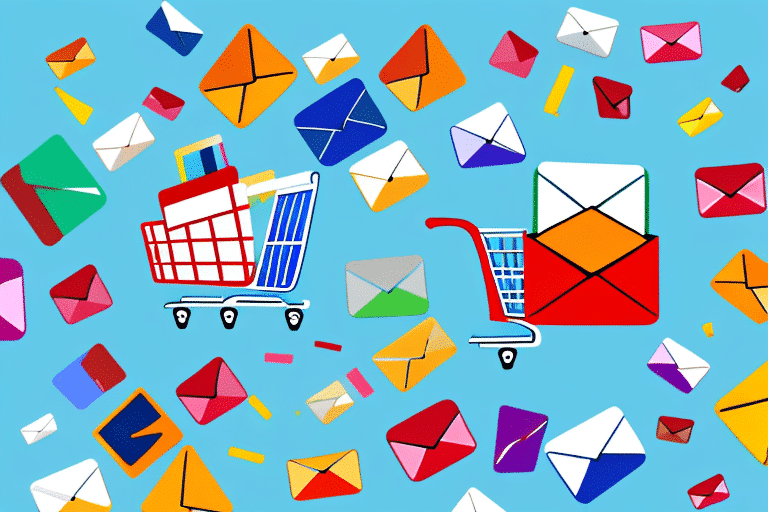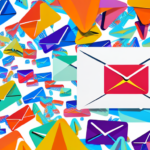How Emails Can Improve Customer Retention for Your Online Store
In today’s highly competitive e-commerce landscape, customer retention is crucial for the success of any online store. Building long-term customer relationships can lead to repeat business and greater revenue opportunities. One effective tool for fostering customer loyalty is email marketing. By crafting compelling and targeted retention campaigns, online retailers can engage with their audience, build trust, and ultimately boost customer loyalty. In this article, we’ll explore the importance of customer retention, the role of emails in retention efforts, and best practices for creating effective email retention campaigns.
Why Customer Retention Matters
The e-commerce market is expanding rapidly, with global online sales projected to reach $6.3 trillion by 2024 [[1](https://www.statista.com/statistics/379046/worldwide-retail-e-commerce-sales/)]. Competition is fierce, and consumers have a plethora of options when choosing an online store, making it harder than ever for a retailer to stand out. This is where customer retention becomes essential. Retaining existing customers ensures sustained business, even during challenging economic times. Studies have shown that repeat customers spend up to 67% more than new customers [[2](https://www.bain.com/insights/loyalty-new-customers/)]. Moreover, loyal customers are more likely to refer friends, providing valuable word-of-mouth marketing.
Another key benefit of customer retention is the reduction of marketing costs. Acquiring new customers can be expensive, involving advertising and promotional campaigns. By focusing on retaining existing customers, online stores can decrease their marketing expenditure, freeing up resources for other areas such as product development or customer service.
Additionally, customer retention helps in building brand loyalty. When customers feel valued and appreciated, they become brand advocates, enhancing your store’s reputation and credibility.
The Role of Email Marketing in Customer Retention
Email marketing stands out as one of the most effective channels for building and maintaining relationships with customers. According to the Data & Marketing Association, the ROI for email marketing is approximately $42 for every $1 spent [[3](https://www.dma.org.uk/research/data)]. By sending regular targeted emails to your existing customer base, you can keep your brand top-of-mind and encourage customers to return to your store.
Emails can serve various retention strategies, including welcoming new customers, offering exclusive discounts, introducing new products or services, and following up on previous purchases. Personalizing these campaigns for specific audience segments increases their effectiveness and relevance.
Moreover, emails can be utilized to gather valuable customer feedback through surveys or reviews, providing insights into customer preferences and areas for improvement. This feedback loop helps in refining your offerings and enhancing customer satisfaction.
Best Practices for Effective Email Retention Campaigns
Creating effective customer retention emails requires a strategic approach that balances messaging, design, and timing. Here are some best practices to consider:
- Mobile Optimization: Ensure that your emails are mobile-friendly, catering to customers who read emails on their mobile devices. With over 50% of emails opened on mobile devices [[4](https://www.smartinsights.com/mobile-marketing/email-marketing-statistics/)], this is crucial for engagement.
- Visual Engagement: Use visually appealing designs to capture the recipient’s attention. Incorporate images, graphics, and a clean layout to make your emails stand out.
- Clear Call-to-Action (CTA): Include a prominent CTA that encourages recipients to take specific actions, such as making a purchase or visiting your website.
- Personalization: Address recipients by their name and tailor content based on their preferences and behaviors to create a more personalized experience.
- Concise Messaging: Keep your messages clear and to the point, focusing on the recipient’s interests and needs.
- Optimal Timing: Send emails at times when recipients are more likely to engage, such as weekends or evenings. Avoid peak hours where your email might get lost in the inbox.
Implementing these practices can significantly enhance the effectiveness of your email retention campaigns, leading to higher engagement and customer loyalty.
Advanced Strategies: Personalization and Segmentation
Personalization and segmentation are critical components of successful email retention strategies. By tailoring your emails based on specific customer data, you can increase engagement and build deeper relationships.
Personalization Techniques
- Behavioral Data: Utilize data such as previous purchases, demographics, and browsing history to create personalized content that resonates with each customer.
- Dynamic Content: Incorporate product recommendations and offers based on individual customer behaviors and preferences.
- Special Occasions: Send personalized emails on birthdays, anniversaries, or other significant dates to make customers feel valued.
- Customized Messaging: Use language that reflects the customer’s communication style and references their past interactions with your brand.
Segmentation Strategies
- Demographic Segmentation: Divide your email list based on demographic factors such as age, gender, or location to send more targeted messages.
- Behavioral Segmentation: Segment customers based on their purchase history, website interactions, or email engagement levels.
- Lifecycle Segmentation: Categorize customers based on their stage in the buying cycle, such as new customers, repeat buyers, or those who haven't purchased in a while.
- Email Preferences: Allow customers to choose their email frequency and content preferences to ensure relevance and reduce unsubscribe rates.
By leveraging personalization and segmentation, you can deliver highly relevant and engaging content that meets the specific needs of different customer groups, thereby enhancing retention rates.
Measuring and Optimizing Email Campaigns
To ensure the success of your email retention campaigns, it’s essential to continuously measure and optimize their performance. Tracking key metrics helps identify what’s working and what needs improvement.
- Open Rates: Measure the percentage of recipients who open your emails. A higher open rate indicates effective subject lines and sender recognition.
- Click-Through Rates (CTR): Track the number of clicks on links within your emails. This metric reflects the engagement level and relevance of your content.
- Conversion Rates: Assess the percentage of recipients who take the desired action after clicking through, such as making a purchase.
- Unsubscribe Rates: Monitor how many recipients opt out of your email list to identify potential issues with your content or frequency.
- Revenue Generated: Analyze the direct revenue attributed to your email campaigns to evaluate their overall effectiveness.
Implementing A/B testing allows you to experiment with different elements of your emails, such as subject lines, content, and CTAs, to determine what resonates best with your audience. Additionally, using advanced analytics tools can provide deeper insights into customer behaviors and preferences, enabling more informed optimization strategies.
Case Studies and Success Metrics
Learning from successful case studies can provide valuable insights and inspiration for your own email retention campaigns. Here are some examples of leading online retailers who have effectively utilized email marketing to enhance customer retention:
- Amazon: By including related product recommendations in follow-up emails, Amazon has increased its sales by 60% [[5](https://www.adroll.com/blog/marketing/amazon-email-marketing)].
- Zulily: Personalized daily deals based on previous purchases have led to a 25% increase in sales [[6](https://www.business.com/articles/email-marketing-strategies/)].
- Crate and Barrel: Cart abandonment and product recommendation campaigns have driven a 10% increase in online sales [[7](https://www.shopify.com/blog/cart-abandonment)].
These examples demonstrate the tangible benefits of well-executed email retention strategies, highlighting the importance of personalization, timely communication, and targeted content.
Future Trends in Email Marketing
The landscape of email marketing is constantly evolving, with new innovations emerging to enhance customer retention strategies. Staying abreast of these trends can provide a competitive edge:
- AI-Driven Personalization: Leveraging artificial intelligence to create highly personalized and automated email campaigns based on real-time data and customer behaviors.
- Interactive Email Designs: Incorporating HTML5 and CSS3 to create interactive elements within emails, such as carousels, embedded videos, and clickable menus, enhancing user engagement.
- Advanced Analytics: Utilizing sophisticated analytics tools to track and analyze email engagement in real-time, allowing for more responsive and adaptive campaign strategies.
- Privacy and Data Security: With increasing concerns over data privacy, ensuring compliance with regulations like GDPR and CCPA is paramount in maintaining customer trust.
Embracing these trends can help online retailers stay ahead in the competitive e-commerce environment, ensuring that their email retention strategies remain effective and relevant.
Conclusion
Email marketing is an incredibly powerful tool for improving customer retention in e-commerce. By following best practices, leveraging personalization and segmentation, analyzing campaign performance, and staying informed about emerging trends, online stores can create highly effective email retention strategies. These strategies not only keep customers engaged and loyal but also drive repeat business and sustained growth.
References
- Statista. (2023). Worldwide retail e-commerce sales. https://www.statista.com/statistics/379046/worldwide-retail-e-commerce-sales/
- Bain & Company. (2022). The value of customer loyalty. https://www.bain.com/insights/loyalty-new-customers/
- DMA. (2023). Email marketing ROI. https://www.dma.org.uk/research/data
- Smart Insights. (2023). Mobile email statistics. https://www.smartinsights.com/mobile-marketing/email-marketing-statistics/
- AdRoll. (2023). Amazon’s email marketing strategies. https://www.adroll.com/blog/marketing/amazon-email-marketing
- Business.com. (2023). Email marketing strategies. https://www.business.com/articles/email-marketing-strategies/
- Shopify. (2023). Cart abandonment strategies. https://www.shopify.com/blog/cart-abandonment




















